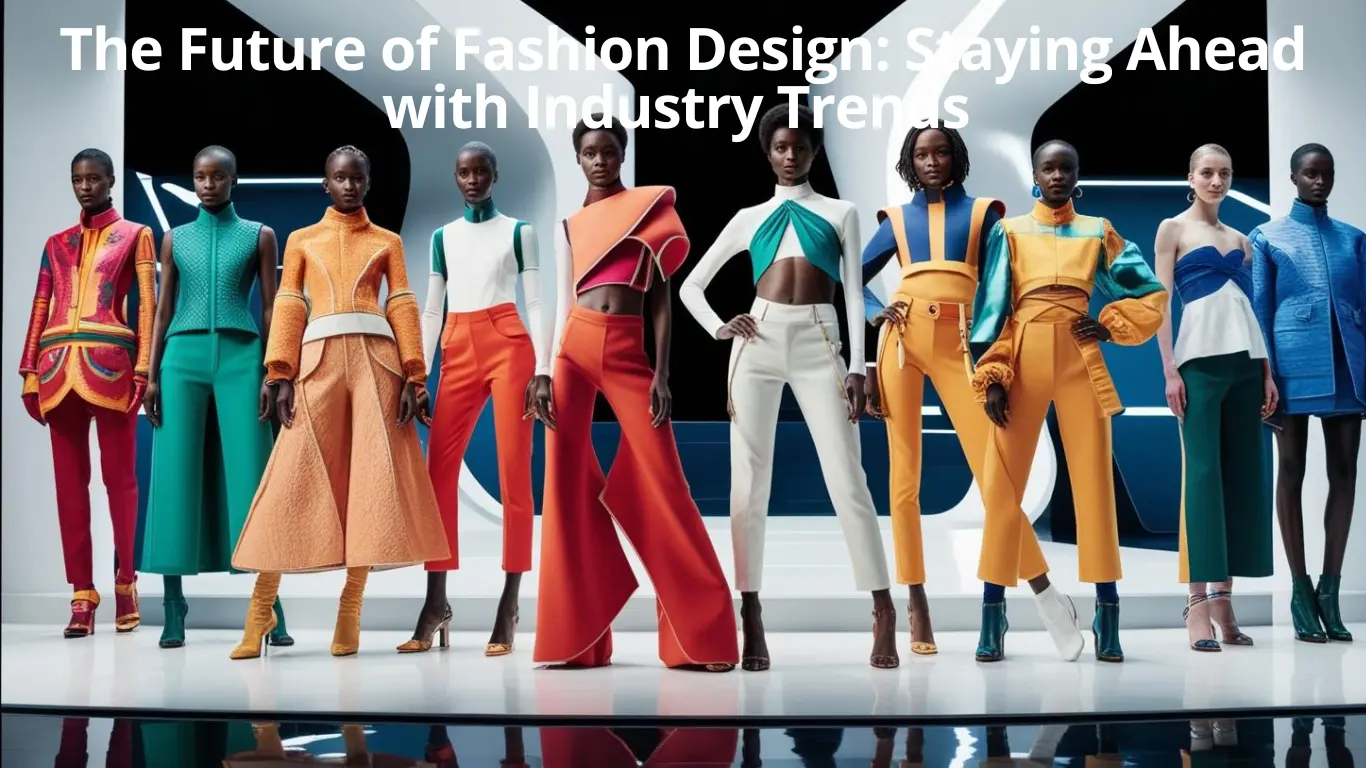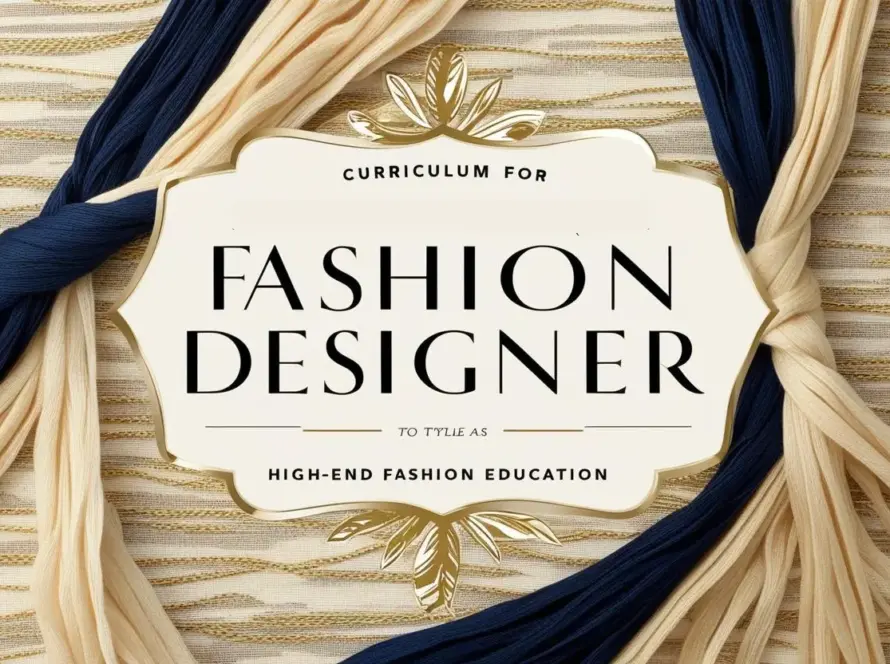Well Ahead of the Trends: The Future of Fashion Design Going ahead, one wonders how to keep ahead in such fast-changing industries. Fashion is one of those worlds that never seem to stop changing, with new trends and technologies popping out every other day. How will you, as a designer, be able to keep ahead? It’s all about staying in the lead when it comes to industry trends, and for that, one really needs a sound foundation to start with, an art of adaptation, and a vision toward the future.
In the blog, we talk about how to keep up with the fast-changing fashion scenery, why a 2-year advanced program in fashion design plays an important role in that process, and how embracing the future shapes you to become a certain designer.
What trends does the industry hold in store for you that have come to define the future of fashion?
The fashion world is more fluid than ever before. Trends today shoot from sustainability to technological innovation, including cultural changes. So, how will you, as a designer, maneuver through the trends to stay relevant?
Probably among the many that have so far emerged, one of the major trends is that of sustainability. Consumers and users are now more eco-conscious than previously, and designs should consider eco-friendliness in their making through the use of materials, proper labor practices, and circularity in fashion collections. As a young and aspiring designer, the understanding of the future of sustainable fashion will finally allow you to create a collection which is both trendy yet socially responsible.
Other key trends are aspects of technological innovation-fashion technology to further revolutionize how clothes would be designed and sold, how they would appear. It ranges from 3D printing to AI-designed tools and includes virtual shows-so many exciting things that finally allow designers to dream big. It keeps one updated with fresh tools and techniques in this extremely competitive industry.
Last but most definitely not least, cultural shifts most powerfully hit fashion. This is the upcoming recognition for diversity, inclusiveness, and fluidity in genders, creating new perspectives towards fashion and redesigning its creation. These changes will make for a really forward-thinking creator with great insight into the world that surrounds him or her if recognized and placed into your work as an aspiring designer.

How does a 2-year advanced program in Fashion Design keep you ahead?
Well, one good way is to be enrolled in such a course structure of Fashion Design. A two-year course gives you ample time and resources to plunge into minute details and minute information regarding the fashion world, thus giving you an overview of technical skills and broadly speaking about industry trends. Here’s how:
You will learn everything about fashion, from design to strategy, in the two years-including all details from the present to future trends. You’ll be exposed to areas such as sustainability, technology, and business strategies that will make a future-proof career as a designer.
Practical Application: Practicum courses could also be incorporated into most 2-year Fashion programs; internships combined with design projects. You will be working on real-life projects to answer emerging needs of the fashion market. By doing this, you further equip yourself to satisfy today’s current demand or even tomorrow’s demands from the fashion consumer.
Expert Guidance: Industry mentorship led by professionals will guide the interaction that is ahead in emerging trends during your 2-year program. Their creative growth insight, combined with hands-on experiences, equips one with ways in which adaptation to changing market dynamics can be effected in your design.
Networking Opportunities: The courses of fashion design bring you in front of a number of designers, influencers, and industry experts possessing inside information related to what would be next upcoming in the world of fashion. An early affiliation with them promotes these opportunities about collaboration, etc., onward. It will let you stay on top of every current news surrounding your profession.

Why Is Adaptability Important for an Aspiring Designer?
Fashion is known to change overnight, and one needs to learn to roll along with the punches. What’s hot today is cold tomorrow; trends change, and faster than ever. As a future designer, learning to be flexible will be key to your longevity.
Adaptability is not a one-box thinking-settling on what is hot at the moment but trying to see what’s around the bend and positioning your life and business to leverage it. You have to stay fresh and relevant with continuous learning, new techniques, and embracing of change.
Now, digital fashion seems to be all about virtual collections, online fashion shows, and even virtual try-ons. These ideas expand on the reach of traditional design and will continue to offer you more innovative methods of considering your craft.
What Does the Future Hold for Fashion in Terms of Technology?
Technology and fashion go hand in hand in the future. From AI-powered software to aid design, 3D printing makes the industry digital. If anything, this means more designers of the future are prepared to include technology into their design process.
More often than not, a 2-year advanced program in fashion may include the use of digital tools and techniques that redefine the contours of this industry. You will learn about pattern making, fabric simulation, and even the use of software for 3D garment visualization. These are tools that provide you with more speed for trying out ideas and creating things faster, as wanted in the world today, dominated by fast pace and continuous trend changes.
Technology will also allow more personalization: consumers need products to meet their specific needs, and designers in a position to infuse their collections with the ability for customization will have the edge. Knowing how to use technology to leverage personalized fashion makes you more relevant in a tech-driven market.
Conclusion
Fashion has always been changeable, but building a brand is the differentiator. Brand building is an extension of one’s philosophy, values, and vision; it’s becoming very important to becoming a designer in the future because it makes designers find their identity and gain loyal customers.
.The world of fashion is changing, and it is your ability to adapt and evolve with it that will define your success. Continue being up-to-date with the latest trends and embracing new technologies to hold your position in the future of fashion with an adaptable strong design philosophy.




